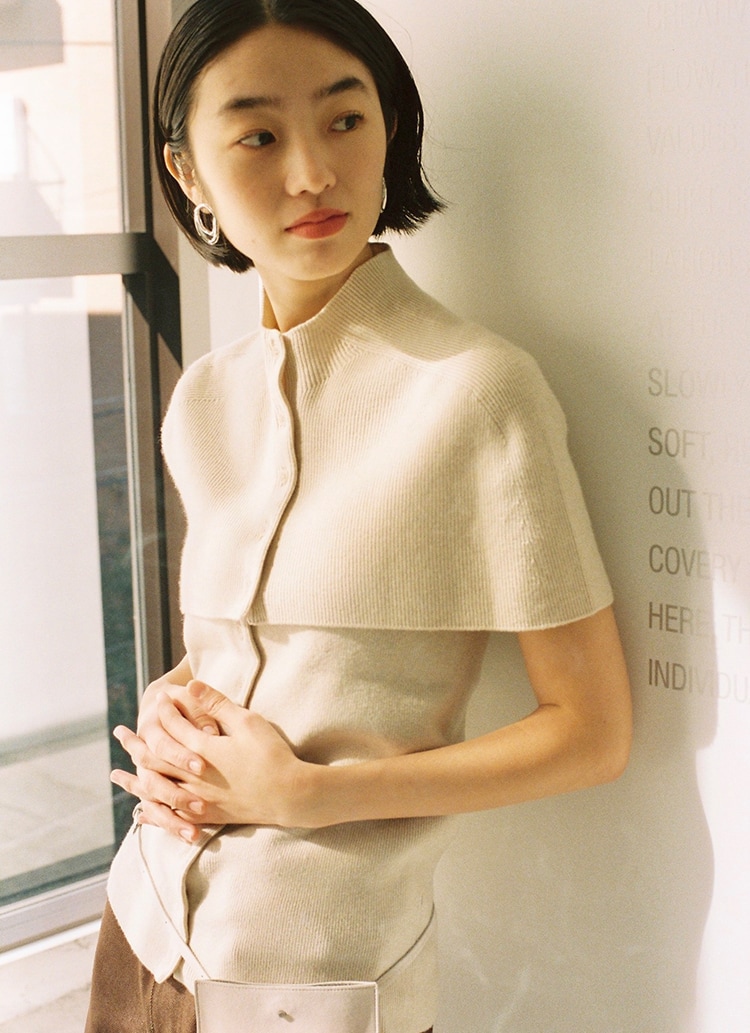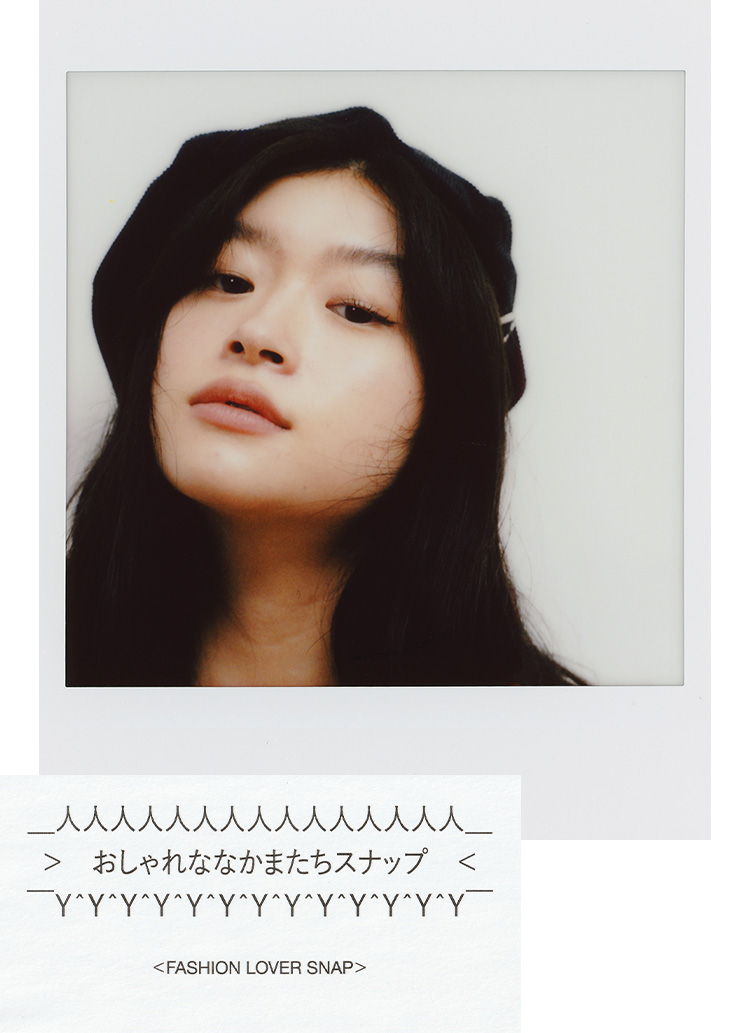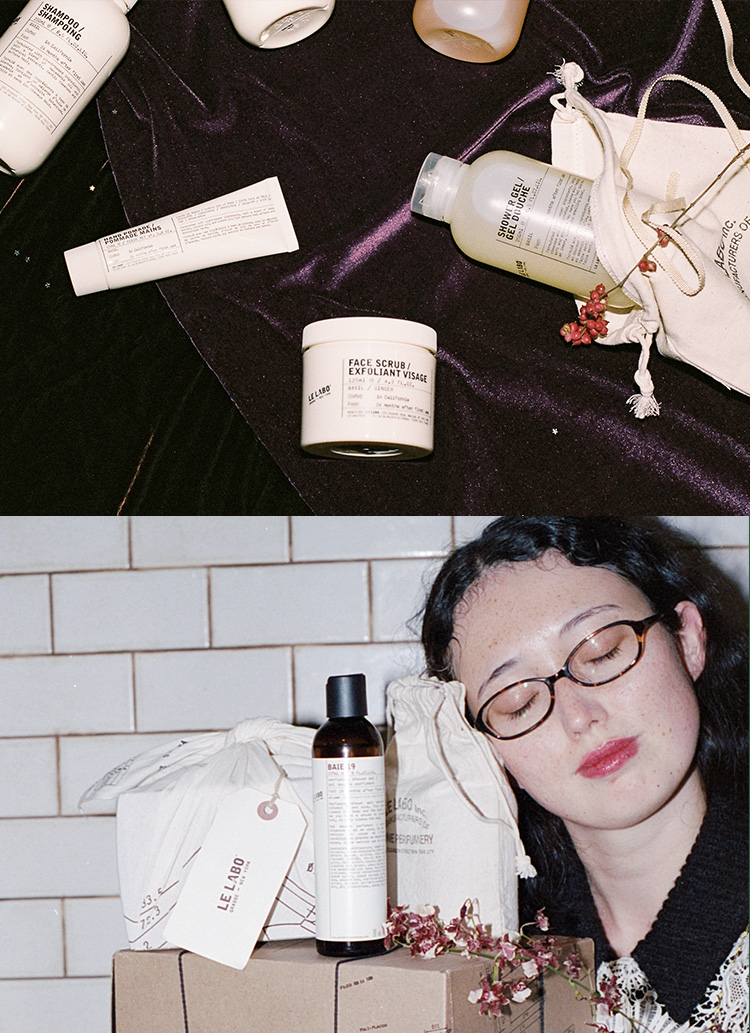Social and fashion et cetera that can't be found by opening textbooks or looking in the corners of the school route. What if you could find them in the purchasing department of a university? With this dreamlike concept in mind, "Stand Seven" transformed the purchasing department of Osaka Gakuin University into a select store.
There are only 10 required subjects, including "Fashion," "Vintage," and "Travel. If you listen to Mr. Taizo Nagahara, the man behind this program, you will find a way of shopping that has never existed before.
SHOP
This stand-style boutique opened inside the Kinokuniya Book Center on the campus of Osaka Gakuin University. In October, a pop-up event by "Spotaka" × "NIKE SB" will be held.
PROFILE
He has worked as a buyer for 20 years at select stores such as Ron Herman, and is well versed in all genres of fashion, from European classics to the streets of L.A. He has also worked as a fashion designer for many years. At "Stand Seven," he fully demonstrates his creativity based on his knowledge and experience.
A select store created by a former buyer who wanted to become a teacher.
You have been involved in the fashion industry for over 20 years.
When I was a student, I actually attended a four-year college because I wanted to become a teacher. However, during my four years there, I couldn't decide which subjects I wanted to teach at elementary, junior high, high, and high schools. I had a strong desire to be involved in education, but I didn't know how I could give back to my students.
Then, I decided to think about it once I had done what I liked. That is why I chose the fashion industry.
So you didn't graduate from a dressmaking school. I was also surprised that you wanted to become a teacher.
I had always liked clothes. I thought I had to learn from scratch to become a clothing professional, so I started working as a sales representative in the closing department of a select store. The first six years were spent in the storefront, and then I became a buyer. During my time as a buyer, I traveled to the U.S. and Europe quite often.
After that, you were put in charge of casual wear instead of suits, right?
Yes, I think I have learned the basics of clothing, such as TPO and the structure of clothes, from suits, so I think I have gained more depth in casual wear. Casual clothing is free, isn't it? But there is a lot of history and stories behind it, and I was able to explain them based on that.
What was the story behind the opening of "Stand Seven," which you have worked on over the course of your career?
At the end of last year, I had the opportunity to give a lecture at Osaka Gakuin University. I talked about the fashion industry based on my experience as a buyer. I talked about the events in Paris and the philosophy of the brand, using photos and videos.
At first we thought that not that many people would show up, but when we opened the door, there was standing room only. It was not only students, but also high school students and local residents, and about 300 people came.
I feel like it was fate that brought you to the podium after more than 20 years of teaching, even if it was only in the form of a lecture.
It really was, and after that lecture, I was flooded with a wow of emotions that I had forgotten about. I had very few opportunities to talk to students when I was a buyer, so that was very refreshing. Above all, I learned a lot from the voices of people outside the fashion industry. After the lecture, I immediately thought, "Is there anything I can do to help the school and the students?
So, you have brought fashion and "reduction" together in a way that was inconclusive 20 years ago.
That's exactly how I felt. I wanted to express myself in a more three-dimensional way, not just through photos, videos, and stories. I wanted to create a place where students could actually see and feel the content of my lectures. When I expressed this desire to the university, they responded "by all means" and this project was launched. I am truly grateful to the people at the university.
Learn about fashion, 10 required courses.
I see, so that's how it happened. It is interesting that you opened a general university without a fashion department.
I wanted to improve the regular purchasing department and make college wear and such cooler. I changed the purchasing department into a select store because I thought it was the form where I could best utilize my experience as a buyer, rather than making things.
In addition, I have met many people and things from Europe, America, and many other countries, and I wanted to involve them in "Stand Seven" and do something interesting together. A select store was the best way to communicate this in an easy-to-understand manner. However, we did not want to make it a store that could be anything and everything.
Is that why you limited the number of elements that make up "Stand Seven" to 10?
That's right. I think the 10 elements of "original goods," "vintage," "sports," "beauty," "living," "travel," "art/books," "games/play," and "pop-up events" are the essential subjects I want to convey to the students through the store.
OGU original college sweatshirt ¥4,500+TAX
OGU" is an acronym for "OSAKA GAKUIN UNIVERSITY. The edge of the logo has a full, three-dimensional appearance.
Take "vintage" for example. We want people to know that today's clothes exist because of the masterpieces of the past, and we want people to learn from wearing them. This OGU Original Sweatshirt is based on the 80's American collegiate style. That's why we not only have this item available for purchase, but also vintage Champion sweatshirts from the 70s and 80s. We also have silver accessories from Tiffany & Co. and vintage Levi's.
I think that knowing about vintage fashion will deepen our understanding of contemporary fashion. It is like a history lesson, so to speak.
Yes. And "Travel". Nowadays, it is not easy to travel because of this situation, but we want students to travel and have various experiences. That is why we have asked JAL and ANA to provide us with their in-flight magazines so that they can be read in the store. Even adults can enjoy reading them.
There is also a collaboration with "New Era" and a travel pouch made with a wetsuit shop called "Rush Wetsuits" in Inamuragasaki. At first, they said, "We've never made such a small item before," but we were selfish and made a special order (laugh). We also have plates, pen cases, and other miscellaneous items purchased in the U.S., as well as cosmetics for girls.
New Era® special order college cap ¥5,800+TAX
The "P" on the front is derived from the school's image character, Phenix.
Travel pouch ¥15,000+TAX
The wetsuit material is also waterproof. It is also available in a wide variety of colors.
We can do this because of the friends we have met over the past 20 years.
I think the concept was "for students," which is why the brand was so forthcoming in responding to our request.
It really was, and many people said, "By all means!" I would like to do both a monthly pop-up event and a place where we can communicate with the students. We would also like to focus on one brand each month and hold both pop-up events and opportunities to communicate with the students. I think this is a great opportunity not only for the students to learn about the brand, but also for the brand to learn what the students are thinking through discussions.
The first of these pop-ups was "Spotaka" x "NIKE SB," wasn't it?
That's right. It is "Sports Takahashi," a long-established sports store founded in Osaka in the mid-Meiji period. We are planning to create a place where people can not only buy items at the pop-up, but also talk about the philosophy of "NIKE SB" and the skate culture in Kansai that "Sports Takahashi" has seen, which they cannot usually hear in the store.
Can the general public enter the store?
You can totally get in. Universities are not only for students, but actually anyone can enter. However, even though they are such open places, Japanese universities are not so easy to visit. At American universities, the entire community supports the university and its sports teams, and there are even people who work at the university. I would like to realize this kind of connection between the university and the community through this store.
Did you also visit foreign universities when you went on overseas business trips?
I didn't go often, but I went to about five or six schools, including California, San Diego, and UCLA. At that time, of course, I also looked at the purchasing department. There was a big dormitory on campus, and it was like a town. That was interesting.
Who did you hire to do the interior design?
We asked Koji Oba, a palace carpenter and skater, to do the work. We asked him to make display stands, chairs for fitting, and other fixtures by hand on the spot. If something was missing, we would make it on the spot. I wanted to create a space with warmth rather than inorganic steel, so I immediately thought of Mr. Ohba, who specializes in wood.
The logo was designed by Koji Toyoda, one of Japan's foremost surf art experts.
Yes, I have asked him to design the "Stand Seven" logo and college sweatshirts. Mr. Toyoda is like a teacher to me. He teaches me information that I only know from books and videos, and he shares his own experiences with me in detail. He would tell me things like, "There were people like this in California in the 1970s.
He conveys to us words, colors, and smells that we could not have experienced without being there at that time. That is information that you cannot get from any book, so I really trust him as a graphic designer.
College T-shirt ¥3,000+TAX
In addition to the design, the soft texture and luster of the fabric are superb.
That is exactly what you are trying to do with "Stand Seven," isn't it?
Yes, I think I should pass on to the students what I have heard from Mr. Toyoda. I want them to be interested in the fashion industry and understand clothes better, and I hope I can be a catalyst for that.
Enjoy shopping that does not end with "just buying".
I felt that the way of shopping and the way of perceiving fashion were different between today's students and those of Mr. Nagahara's school days.
Of course, the times were different, and that may be true. When I was a college student, the American casual boom had calmed down a bit, and so-called European clean casual wear such as "A.P.C." and "Helmut Lang" were becoming popular. Then there was the rise of hip-hop culture, and for women, Miuccia Prada became the designer of Prada, and pants and skirts made of stretch fabric became a big hit.
It was a time when various cultures were mixed together.
Yes, it was. I think it was a time when various cultures came from all over the place and the entire fashion industry was like a battle royal. The engine was running on a global scale, and I think everyone was interested in fashion.
I feel as if I am changing and expressing myself by wearing new clothes. I think that many of today's children are choosing clothes based on price. Of course, there are many good clothes in fast fashion, but I wonder to what extent they understand the stories behind them.
Maybe there are too many choices and I don't know how to choose.
That's right. And you don't get scolded at fast-fashion stores. When I was in elementary school, I went to a used clothing store near an American military base and was told, "You're not ready yet" (laughs). (Laughs.) But I really learned a lot about when these items were made and what they were like. When I bought and wore Levi's 501s for the first time, I felt like a Hollywood star because the story had already been told to me.
Nowadays, I feel like shopping is so easy. I sometimes wonder how much communication is created in stores. It would be a waste if people just buy something and that's it.
In addition, with online shopping, you don't have to talk to anyone to complete your purchase.
That's right. The act of shopping itself is changing. Although it is convenient, we still want to value communication.
I hope that Stand Seven will become a place where people from all walks of life can communicate with each other. Listening to others is one thing, but I think you can understand the appeal of a thing only by experiencing it for yourself. If you don't do that, you won't be able to learn it for yourself, and you won't be able to put it into words. It is not that young people are not able to do so, but it is definitely a society that lacks such opportunities. I want people to know the joy of fashion through communication. I believe that by coming into contact with various people and society, the world will expand rapidly.
STANDSEVEN
Address: Inside Kinokuniya Bookstore, Osaka Gakuin University, 2-36-1 Kishibe Minami, Suita-shi, Osaka
Hours: 8:45 a.m. to 5:00 p.m. (same as book center hours) Closed Saturdays, Sundays and holidays
*Opening hours may change due to the spread of the new coronavirus.
*Osaka Gakuin University students as well as the general public are welcome to use this service.
Osaka Gakuin University" website










